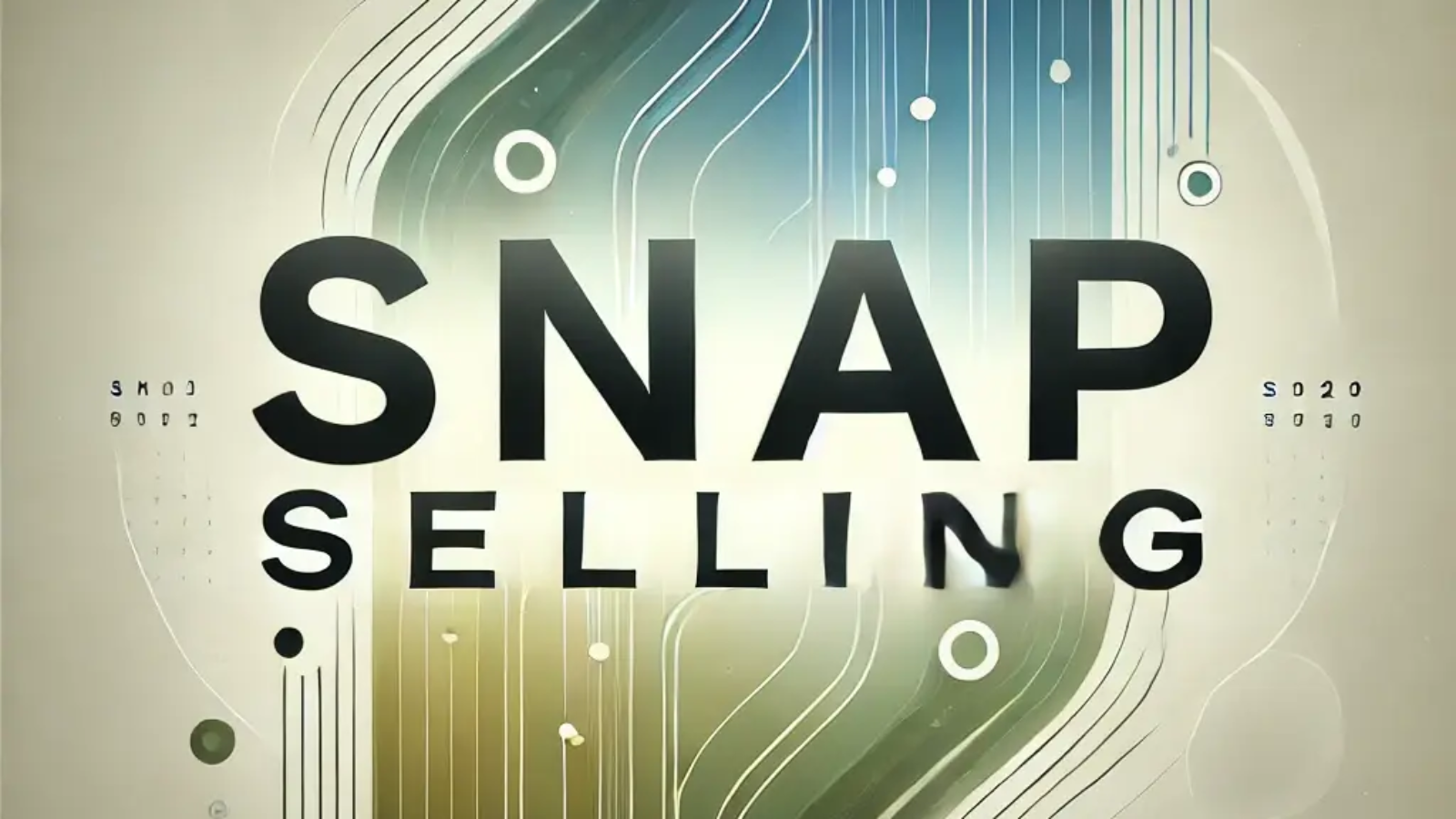Mastering SNAP Selling: Keeping It Simple, Invaluable, Aligned, and Priority
In today’s fast-paced selling environment, where decision-makers are overwhelmed with information and short on time, the SNAP Selling methodology offers a refreshing approach. Developed by Jill Konrath, SNAP Selling is designed to help salespeople break through the noise and connect with busy prospects. In this comprehensive guide, we’ll explore every facet of SNAP Selling, its strengths and potential drawbacks, and how TranscribeIQ can enhance your team’s implementation of this efficient methodology.
What is SNAP Selling?
SNAP Selling is an acronym that stands for:
- Simple
- iNvaluable
- Aligned
- Priority
This methodology is built on the understanding that modern buyers are extremely busy, constantly distracted, and overwhelmed with choices. SNAP Selling aims to cut through this chaos by keeping things simple, demonstrating clear value, aligning with the prospect’s needs, and establishing the solution as a priority.
Let’s break down each component:
Simple
The ‘Simple’ component focuses on making your sales message and process as straightforward and easy to understand as possible.
Key aspects:
- Clear, concise communication
- Elimination of jargon and complexity
- Easy decision-making process for the prospect
Examples:
- Instead of a lengthy product description, provide a one-sentence value proposition
- Break down complex implementation processes into simple, manageable steps
- Use visuals to explain complex concepts quickly and clearly
iNvaluable
The ‘iNvaluable’ aspect is about demonstrating the unique value your solution brings to the prospect’s business.
Key aspects:
- Clear articulation of your unique selling proposition
- Demonstration of tangible business impact
- Differentiation from competitors
Examples:
- “Our analytics solution has helped similar companies increase their revenue by an average of 15% within six months.”
- “Unlike other providers, we offer real-time data integration, which means you can make decisions 40% faster.”
Aligned
‘Aligned’ refers to ensuring your solution and approach are in sync with the prospect’s goals, challenges, and way of doing business.
Key aspects:
- Understanding the prospect’s business objectives
- Tailoring your solution to their specific needs
- Speaking the prospect’s language
Examples:
- “Based on your goal of expanding into new markets, our global data analytics feature would be particularly beneficial for you.”
- “I understand your company values sustainability. Let me show you how our solution can help reduce your carbon footprint by optimizing operations.”
Priority
The ‘Priority’ component is about establishing your solution as a must-have rather than a nice-to-have, creating a sense of urgency.
Key aspects:
- Linking your solution to critical business issues
- Demonstrating the cost of inaction
- Creating a compelling case for immediate action
Examples:
- “Every month you delay implementing this solution, you’re losing approximately $50,000 in potential savings.”
- “Your competitors are already using similar technology. To maintain your market position, it’s crucial to act now.”
Pros of SNAP Selling
- Cuts Through Noise: Designed for busy decision-makers, it helps salespeople stand out in a crowded market.
- Increases Engagement: By keeping things simple and relevant, it’s more likely to capture and maintain prospect attention.
- Focuses on Value: The ‘iNvaluable’ component ensures a strong emphasis on demonstrating tangible business value.
- Adaptable: Can be applied to various industries and sales contexts, from simple products to complex solutions.
- Improves Sales Efficiency: By focusing on what matters most to the prospect, it can help shorten sales cycles.
- Aligns with Modern Buying Behavior: Recognizes the challenges of selling to busy, distracted decision-makers.
- Encourages Strategic Thinking: Requires salespeople to think critically about their value proposition and alignment with customer needs.
- Reduces Cognitive Load: By simplifying complex ideas, it makes it easier for prospects to make decisions.
- Creates Urgency: The ‘Priority’ component helps move deals forward by establishing the need for timely action.
- Improves Qualification: By focusing on alignment and priority, it helps identify the most promising opportunities.
Cons of SNAP Selling
- May Oversimplify: There’s a risk of oversimplifying complex solutions in an attempt to keep things ‘Simple’.
- Requires Deep Understanding: To effectively align and demonstrate value, salespeople need in-depth knowledge of their product and the prospect’s business.
- Can Be Challenging to Implement: Distilling complex value propositions into simple messages can be difficult, especially for technical products.
- Might Not Suit All Buyers: Some decision-makers may prefer more detailed, in-depth information.
- Risk of Appearing Pushy: Creating urgency (Priority) could be perceived as pressure tactics if not done skillfully.
- Continuous Refinement Needed: Keeping messages simple yet impactful requires constant practice and refinement.
- May Not Address All Stakeholders: In complex B2B sales, the approach might not adequately address the needs of all decision-makers.
- Could Lead to Rushed Decisions: The emphasis on urgency might lead to hasty decisions that aren’t in the best interest of the customer.
- Potential for Misalignment: If not executed properly, there’s a risk of misinterpreting the prospect’s needs and priorities.
- May Struggle with Long Sales Cycles: The urgency aspect might be challenging to maintain in extended B2B sales processes.
Is SNAP Selling Right for Your Team?
Consider implementing SNAP Selling if:
- Your prospects are typically busy executives or decision-makers with limited time.
- You’re selling in a crowded market where differentiation is crucial.
- Your sales process often involves breaking through to new prospects quickly.
- You can clearly articulate the unique value of your solution in simple terms.
- Your team is skilled at quickly understanding and aligning with prospect needs.
- You’re looking to improve sales efficiency and shorten sales cycles.
- Your product or service can demonstrate clear, tangible business impact.
However, SNAP Selling might not be the best fit if:
- Your solutions are highly complex and resist simplification.
- Your sales typically involve long, relationship-based cycles with multiple stakeholders.
- Your prospects generally require in-depth technical information to make decisions.
- Your team lacks the skills or resources to quickly tailor messages to each prospect.
- Your market values comprehensive, detailed proposals over simplified pitches.
How TranscribeIQ Can Help with SNAP Selling Implementation
TranscribeIQ’s SNAP Selling analysis feature can automatically evaluate your sales calls and provide insights on each element of the SNAP framework. Here’s a sample output:
SNAP Selling Analysis - NextGen Analytics Date: September 15, 2025 Prospect: Omega Technologies Simple: Strengths: The rep effectively summarized NextGen Analytics' value proposition in a clear, concise manner. They used analogies to explain complex data integration concepts, making them easily understandable. Areas for Improvement: Some technical details about the analytics engine could have been further simplified. Consider developing a set of easy-to-understand metaphors for explaining key technical features. iNvaluable: Strengths: The rep clearly articulated how NextGen Analytics' real-time data processing could reduce decision-making time by 30%, a unique value proposition in the market. They provided a relevant case study demonstrating tangible ROI. Areas for Improvement: The rep could have quantified the value more specifically for Omega Technologies. Develop an ROI calculator that can quickly estimate value based on the prospect's specific metrics. Aligned: Strengths: The rep effectively linked NextGen Analytics' capabilities to Omega Technologies' stated goal of expanding into new markets. They used industry-specific language that resonated with the prospect. Areas for Improvement: The rep could have explored Omega's challenges more deeply before presenting solutions. Develop a quick needs assessment framework to ensure thorough alignment. Priority: Strengths: The rep created a sense of urgency by highlighting how competitors are already leveraging similar technology, potentially threatening Omega's market position. Areas for Improvement: The rep could have been more specific about the cost of delay. Create a 'cost of inaction' calculator to quantify the impact of postponing the decision. Overall Recommendations: 1. Develop a library of simple analogies and metaphors for explaining complex features. 2. Create a customizable ROI calculator for quick value quantification. 3. Implement a structured needs assessment process to ensure thorough alignment. 4. Design a 'cost of inaction' tool to help reps create urgency more effectively. 5. Conduct regular training sessions on distilling complex information into simple, impactful messages.
By leveraging TranscribeIQ’s SNAP Selling analysis, sales teams can:
- Ensure consistent application of SNAP principles across all sales conversations.
- Identify areas where reps excel or need improvement in each component of the SNAP framework.
- Receive actionable insights for enhancing message simplicity and value articulation.
- Track progress over time as reps become more proficient with the SNAP methodology.
- Use data-driven insights for more effective sales coaching and training on creating urgency and alignment.
- Improve the quality and impact of sales messages based on actual conversation data.
- Refine techniques for quickly establishing value and priority with busy decision-makers.
To summarize, SNAP Selling offers an effective approach for engaging busy decision-makers in today’s fast-paced business environment. Its success depends on the salesperson’s ability to communicate simply yet powerfully, demonstrate clear value, align closely with prospect needs, and create a sense of urgency. TranscribeIQ can play a crucial role in implementing and refining the SNAP approach by providing detailed, real-time analysis of sales conversations, enabling sales teams to continuously improve their effectiveness with this efficient methodology.
Resources:
- TranscribeIQ Chrome Extension – start a trial and use our SNAP Selling analysis on your calls
- SNAP Selling – The book that started it all
- Gong’s Guide to SNAP Selling– Check out our partner Gong.io’s guide to SNAP Selling
- SNAP Selling Guide – Guide to SNAP selling
- TranscribeIQ Sales Methodology Examples – check out real analysis for multiple sales approaches, including SNAP selling.


Add a Comment